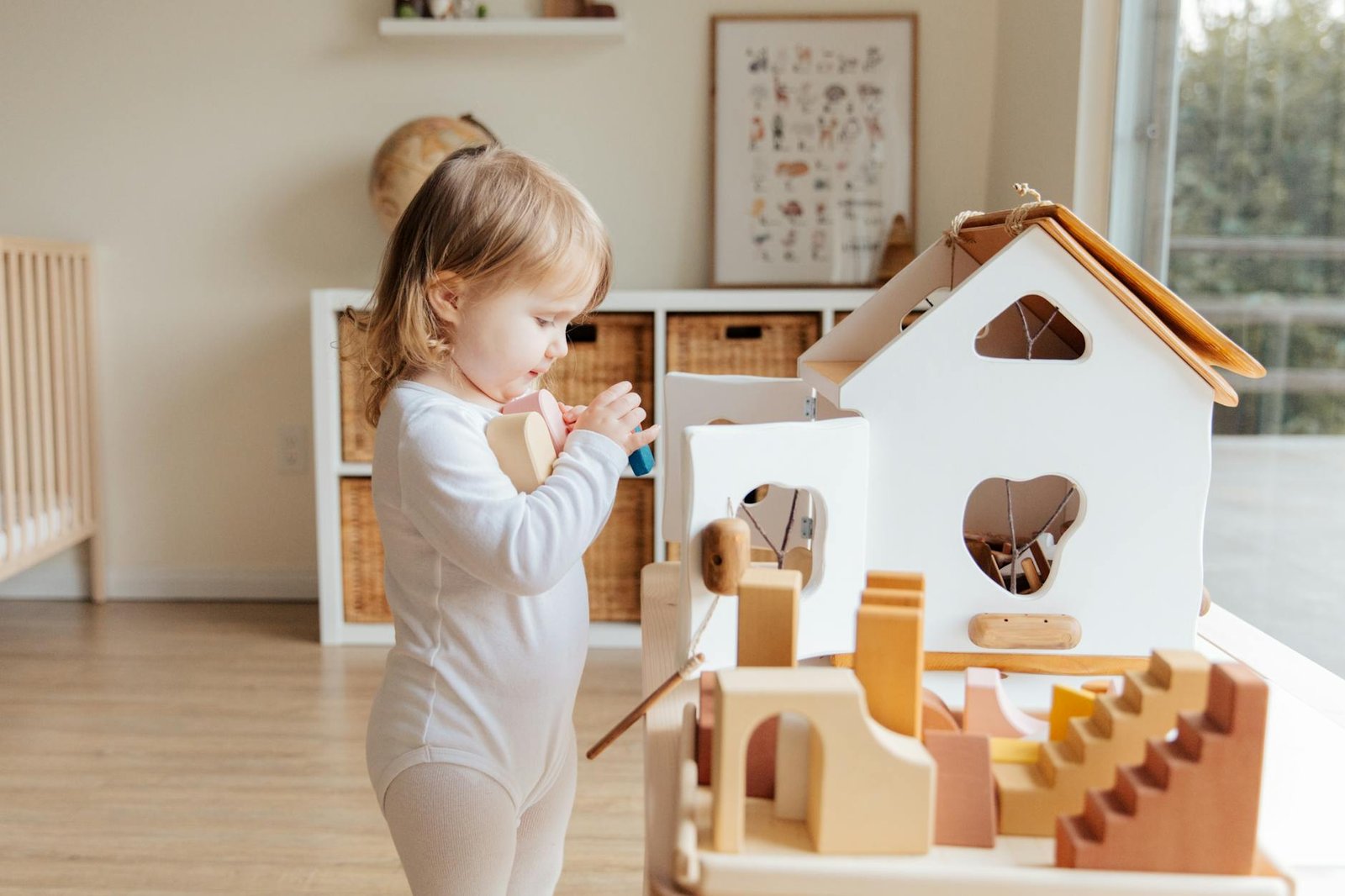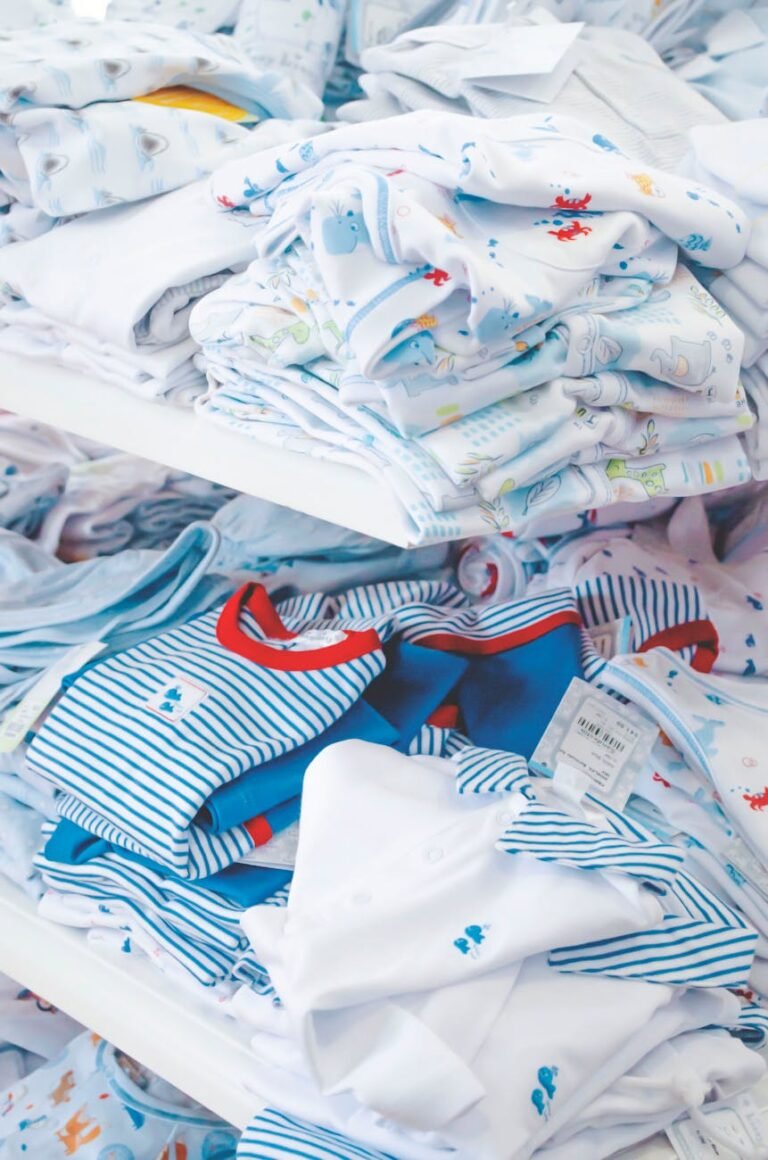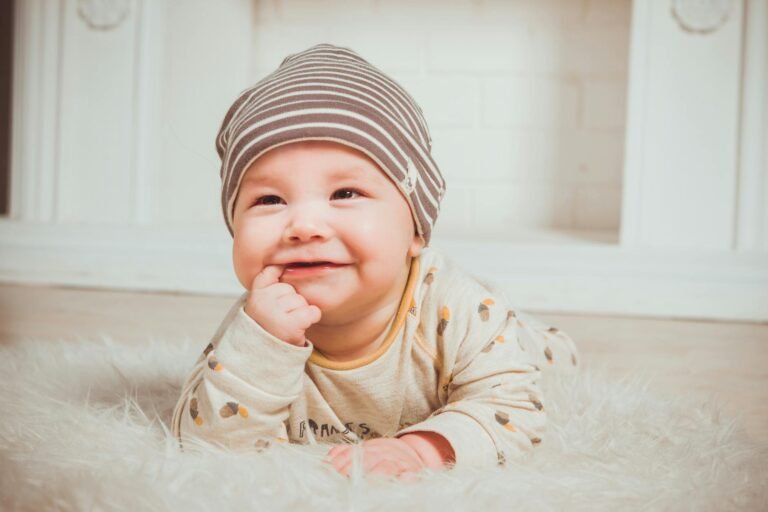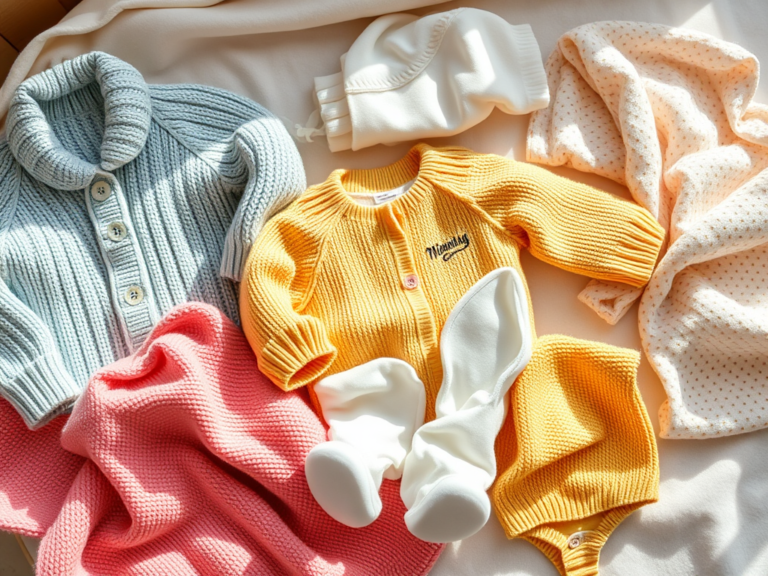Ready to expand your baby clothing lineup and level up your inventory with wholesale baby onesies? You’re not alone. Many retailers step into the realm of onesies because they’re the backbone of any infant wardrobe. They’re comfy, fuss-free, and totally in demand. But how do you make sure you get the best deal, the best quality, and the best supplier so you can profit without stress? Let’s walk through the key tips that can transform your wholesale baby onesies hunt into a smooth, cost-effective, and successful venture.
Begin with clear goals
The first step is knowing exactly what you want to achieve with your onesie collection. Are you looking to attract cost-conscious parents, eco-minded moms, or style-savvy caregivers? Maybe all three. Setting business objectives upfront helps you decide which brands and suppliers fit your vision. If your store centers on organic apparel, you’ll know to look for certifications like GOTS (Global Organic Textile Standard). If you prefer budget-friendly, you’ll scout lower-cost suppliers that still offer decent quality.
Once you pinpoint your target, figure out how many onesies you plan to stock. Starting too small may limit discounts, but ordering more than you can handle ties up your capital. Strike a balance by using historical sales data if you have it. If you’re brand new, test a moderate batch, then adjust once you see what sells. Also factor in any potential add-ons. For instance, you might stock matching items like wholesale baby bibs or wholesale baby hats to encourage bundled purchases. Clearly defined goals will guide every choice you make from here on out.
Focus on quality
Quality can make or break your wholesale baby onesies offering. Babies have sensitive skin, so soft, breathable fabrics are non-negotiable. Look for onesies that feature high cotton content. Many suppliers provide 100% cotton options, especially for solid colors, which means better comfort and durability for everyday wear. According to Printify’s listings, all solid colors in their baby bodysuits are 100% cotton, which is a huge bonus for babies’ sensitive skin (Printify).
When you’re comparing suppliers, always check fabric composition, stitching, and the feel of the garment. If you can order a sample (often called a “sample pack”), go for it. This is your chance to check shrinkage, stretch, and how the material holds up to repeated washing. Some retailers also request wash tests from the supplier before committing to large orders. If you’re aiming to be known for high-quality garments, verifying softness and stitch integrity will pay off in happy customers and fewer returns.
Choose your suppliers wisely
Finding the right supplier for wholesale baby onesies is a big piece of the puzzle. Reputable suppliers are consistent in product quality, shipping speed, and overall reliability. Printify, for instance, partners with over 80 Print Providers worldwide, so you can choose the region and shipping options best suited to your location. They even offer shipping discounts of up to 30% if you order 60 or more onesies from the same Print Provider, which can be a game-changer for your margins (Printify).
If you’re interested in more traditional distribution, suppliers like Bambini Layette supply wholesale baby bodysuits in a range of sizes up to 24 months (Bambini Layette). WholesaleSockDeals is another option if you’re aiming to scoop up 24 to 144 pieces at a time. They sometimes advertise entire cases at a per-piece price that might work out much cheaper than smaller bulk orders (WholesaleSockDeals).
You’ll also find dedicated manufacturers like Baby Clothing Factory who focus on cost breakdowns and custom baby clothing. They offer insight on factors like labor expenses and the benefits of negotiating volume discounts (Baby Clothing Factory). All these suppliers can work; the key is to match their offerings to your store’s specific vibe, budget, and timeline.
Customize to stand out
Lots of retailers sell baby onesies, so how do you differentiate yours? One popular route is customization. You can add your store logo, creative prints, or witty messages to your wholesale baby onesies. Many suppliers include decoration services. Blankstyle, for example, provides screen printing and embroidery on bulk orders, and you can get an instant quote to see if it fits your budget (Blankstyle).
If you prefer digital direct-to-garment (DTG) printing, Cotton Creations can accommodate intricate designs with crisp lines, elaborate text, and even watercolor illustrations (Cotton Creations). DTG is perfect when you want full-color graphics in smaller runs. Personalizing onesies with birth dates, names, or a store brand can be a great way to keep customers coming back, especially for baby shower gifts and special occasions. Never underestimate the power of a cute, custom design.
Balance cost and value
Everyone loves a good bargain, but don’t chase low prices at the expense of your reputation. A thoughtful approach to cost is essential. One helpful guideline says that material costs typically add up to around 30% to 40% of the final retail price, meaning a baby onesie might retail around $10.50 to $13.00, depending on the materials used (LeelineApparel). Labor costs can range from 15% to 20% of production costs for simpler items like a basic onesie, so keep that in mind as you negotiate.
If you decide to go sustainable, you’ll likely pay more. Eco-friendly certifications like OEKO-TEX® or GOTS raise costs because of stricter standards and production methods. But the higher price can often justify a higher retail markup. It’s all about finding that sweet spot where your margins are healthy, and customers still feel they’re getting excellent value. Also pay attention to overhead: storage, packaging, and shipping fees factor into your per-item cost. Do a quick spreadsheet to break down these expenses, so you’re never in the dark about how your final price stacks up.
Look at shipping options
Wholesale baby onesies might be small, but shipping costs can still add up quickly. If you’re ordering from multiple countries, remember to factor in import duties and shipping lead times. Printify offers shipping discounts if you order in bulk from the same provider, which can mean major savings (Printify). However, you’ll want to check the provider’s location. If it’s far away, any tax or customs fees could eat away at your profit.
Also weigh the possibility of domestic versus international shipping. Domestic suppliers might offer faster turnarounds and simpler returns, which is a comfort if you want to reorder quickly. On the flip side, overseas manufacturers can sometimes provide a lower per-unit cost. The key is to double-check total landed cost—product cost plus shipping, taxes, and any custom duties. Then compare that with domestic options for an apples-to-apples view. With shipping routes more global than ever, you can usually find a sweet spot between your budget and delivery time.
Offer variety to customers
Babies grow like crazy. So if you want to capture repeat customers, offer multiple sizes and styles. Maybe you start with short-sleeve onesies. Later, consider adding long-sleeve, sleeveless, or organic lines. You can also expand into complementary products, such as wholesale baby blankets or wholesale baby socks to cover more of your shoppers’ needs.
Brands like Bambini Layette keep things simple by providing standard infant sizes, from 6-12 months up to 18-24 months (Bambini Layette). Others, like Blankstyle, stock short-sleeve and long-sleeve onesies in all sorts of colors, letting you target distinct looks or seasonal trends (Blankstyle). Many retailers also keep unisex color options on hand. Neutral colors like white, gray, beige, or sage green appeal to parents who don’t want to stick to traditional pink or blue. Having this kind of variety encourages bigger orders and repeat visits, especially if buyers know they can always find that next size up.
Think eco-friendly
Eco-friendly baby clothing isn’t just a fast-growing trend. It’s practically a movement. Many parents and caregivers now look for safe, chemical-free materials that are kind to the environment. If that’s your market, consider stocking organic cotton onesies certified by reputable agencies. Cotton Creations, for example, offers organic cotton bodysuits grown without pesticides and dyed with natural substances (Cotton Creations). With eco-friendly lines, you can charge a premium and tap into a demographic willing to pay more for ethical production.
However, be prepared for higher upfront costs. Sourcing organic materials usually bumps up the unit price. The payoff can be a strong brand reputation if you market these responsibly and emphasize their benefits. Parents want to know that they’re making a safe choice for their little ones, so any certifications or stories about the manufacturing process can boost trust and loyalty. You can also expand your line with organic baby clothes wholesale if sustainability is central to your store’s identity.
Seek volume discounts
If you’re scaling up, negotiating volume discounts is a powerful way to cut costs. Suppliers often reward big orders with lower per-unit pricing, and you can use that advantage to remain competitive. Baby Clothing Factory notes that these volume discounts can drastically reduce individual costs if you’re placing bulk orders (Baby Clothing Factory).
Before finalizing any deal, ask suppliers:
- At what quantity do volume discounts start?
- Do we need to stick to a single size or style, or can the total order include multiple variations?
- Do you offer better terms like extended payment options or partial up-front deposits for large orders?
The more flexible your supplier, the better. Some also offer mixed-batch discounts, so instead of buying 1,000 identical onesies, you might get 250 in four different sizes at the same discounted rate. That can give you solid variety without paying a premium.
Plan your pricing strategy
Now that you’ve got your costs in line, it’s time to figure out how much to charge. At its core, your price should reflect wholesale expenses (fabric, labor, overhead, shipping) plus a markup that covers operational costs and profit. Labor can add up, but overhead is another critical line item. Factory overhead can account for 20-30% of the total labor cost, covering supervisor wages, facility maintenance, and quality control (LeelineApparel).
Consider the perceived value of your product. If you’re advertising premium quality or eco-friendly certifications, parents expect a higher tag. If your brand focuses on “affordable everyday wear,” keep margins reasonable so you don’t outprice your target market. Another trick is to bundle items for extra convenience. Combine a set of onesies with matching wholesale baby accessories or wholesale baby rompers. This approach not only encourages higher order values, but also helps your customers see you as a convenient one-stop shop.
Compare major wholesale options
You have a range of choices when it comes to stocking your store with wholesale baby onesies. Here’s a quick snapshot of some major names:
| Supplier/Platform | Key Features | Link |
|---|---|---|
| Printify | Selection of customizable Onesies® plus volume-based shipping discounts of up to 30%. | https://printify.com/bulk-orders/onesies/ |
| Bambini Layette | Sizes up to 24 months, straightforward wholesale model for everyday infant bodysuits. | https://www.bambinilayette.com/content/6-size-chart |
| WholesaleSockDeals | Bulk pricing (e.g., 24 onesies at $4.21 each) for cost-conscious buyers. | https://www.wholesalesockdeals.com/24-wholesale-infant-onesies-in-white-size-0-6-months/p-2032805.asp |
| Baby Clothing Factory | Insight on manufacturing, labor, and cost negotiations, plus custom production capabilities. | https://babyclothingfactory.com/cost-considerations-in-custom-baby-clothing-manufacturing/ |
| Blankstyle | Screen printing, embroidery, multiple brand choices (Alstyle, Rabbit Skins), and wide color options. | https://www.blankstyle.com/baby-onesies |
| Cotton Creations | Organic, 100% pre-washed cotton, and DTG designs for bold text, crisp lines, or watercolor prints. Also offers bulk discounts. | https://cottoncreations.com/product-category/baby/onesies/ |
This table just skims the surface. Wholesale baby onesies come in every cut, color, and fabric blend you can imagine. Whether you focus on mainstream brands, organic lines, or budget buys, weigh the full package: fabric quality, shipping, cost, customization services, and the supplier’s reliability.
Consider complementary items
It’s easy to expand beyond your main item. Once you’ve nailed your wholesale baby onesies selection, you can add matching items for a fuller product line and bigger average order values. Think about wholesale baby boutique clothing, wholesale toddler clothing, or even cheap baby clothes wholesale for budget segments. Customers love the convenience of grabbing all they need in one shop. And if you highlight coordinating sets or color schemes, you can encourage them to buy multiple items at once.
Mix-and-match pairs like onesies and wholesale baby bottoms can be huge if you’re going after fashion-driven parents. Seasonal sets are also popular—consider summer-themed collections or cozy winter combos. If you have an engaged social media audience, show them outfit ideas. This gives your brand a personal touch and encourages repeat business.
Offer flexible payment terms
Money management matters just as much as product quality. If your supplier offers payment terms, see if you can negotiate partial prepayment, net-30, or net-60 terms. This can make your cash flow more predictable, crucial for a growing wholesaler. Some manufacturers even give discounts if you pay early. On the other hand, watch out for hidden fees or conditions. Thoroughly read contracts, ask clarifying questions, and confirm that no surprise charges will pop up after the goods ship.
If you do a lot of business overseas, factor in currency exchange rates too. If the exchange shifts in your favor, locking in a contract at current rates can be beneficial. If it shifts against you, be prepared to absorb the difference or potentially renegotiate. It’s all about making sure you have a stable financial foundation instead of letting currency swings or long payment delays catch you off guard.
Stay aware of your audience’s needs
As you grow, keep your customer base front and center. For instance, if a large number of your buyers are local pediatricians or daycare centers, you might highlight comfort and durability above all. Doctors’ offices often want easy-to-change outfits, so consider onesies with snap closures or wide openings for quick diaper changes. Cotton Creations even mentions how hospitals and pediatricians benefit from soft, sterilized onesies as a thoughtful touch during extended stays (Cotton Creations).
On the flip side, if your audience is mostly trendy parents shopping for baby shower gifts, style and design might take priority over cost. Research your buyers’ preferences with surveys, social media polls, or simple conversation. No matter which segment you serve, matching your products to their specific desires keeps you a step ahead of competitors.
Summarize your winning approach
So how do you pull all these tips together? Wholesale baby onesies can be both lucrative and fun if you do your homework. Here’s a quick recap to keep things on track:
- Set clear business goals and define your target audience.
- Maintain quality with breathable fabrics and solid stitching.
- Pick a supplier that aligns with your budget, timeline, and brand identity.
- Customize if you can. A unique design sets you apart in a crowded market.
- Balance cost with the overall value you provide to customers.
- Remember to factor in shipping, import fees, and possible taxes.
- Stock a variety of sizes, styles, and colors to keep buyers coming back.
- Go eco-friendly if that fits your brand, even if it costs a bit more.
- Negotiate volume discounts to reduce per-unit costs.
- Plan your pricing strategy so your margins stay healthy.
- Offer complementary items to increase each customer’s cart value.
- Stay flexible with payment terms, especially if you’re growing fast.
- Keep your audience’s needs front and center, adjusting your selection as trends and demands shift.
Once you line up these elements, you’ll have a profitable collection of wholesale baby onesies that parents, daycares, doctors, and gift-buyers can’t resist. As you refine your sourcing strategy, remember this is a process. Learn from each order and keep an ear out for what your shoppers love or dislike. In no time, you’ll be that trusted baby apparel retailer known for quality, reliability, and a personal touch that makes every customer feel at ease.
Good luck on your next purchase, and here’s to building a wholesale baby onesies lineup that delights your customers and helps your business thrive!




